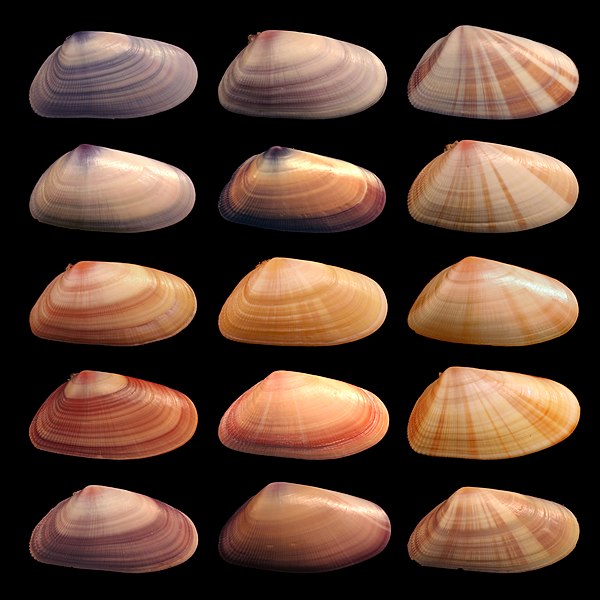Evo rezultata jedne interesantne studije izdatih pocetkom ove godine:
Y-STR variation in Albanian populations: implications on the match probabilities and the genetic legacy of the minority claiming
Gianmarco Ferri1 Contact Information, Sergio Tofanelli2, Milena Alù1, Luca Taglioli2, Erjon Radheshi1, Beatrice Corradini1, Giorgio Paoli2, Cristian Capelli3 and Giovanni Beduschi1
(1) Section of Legal Medicine, Department of Diagnostic and Laboratory Services and Legal Medicine, University of Modena and Reggio Emilia, Modena, Italy
(2) Department of Biology, Anthropology Unit, University of Pisa, Pisa, Italy
(3) Department of Zoology, University of Oxford, Oxford, UK
ukratko.....
Materials and methods
Subjects
DNA of 360 unrelated healthy Albanian males, of which
165 were Ghegs (north Albania), 121 Tosks (south
Albania), 33 Jevgs (alleged Balkan Egyptians) and 41
Gabels (Roma of Albania), was purified from blood and
saliva samples using either the Chelex method [15] or the
QIAGEN micro Kit (Qiagen, Chatsworth, CA) according to
the manufacturer's instructions.
All the participants gave their informed consent, provided
detailed information on their geographical origin, and had
two generations of unrelated paternal ancestry in their region
of birth.
Results
Y-SNP variation
The binary profile (Fig. 2a–c ) mirrored the dual structure
(Ghegs/Tosks vs Gabels/Jevgs) observed at Y-STR variation.
Haplogroup H1-M52, which is strongly associated
with European Roma tribes and to an Indian proto-gypsy
ancestry [26, 29, 47], was found at very low frequency in
the major Albanian groups (0.6–2.5%) but was by far the
dominant haplogroup in the Gabels (68.3%) and the Jevgs
(42.4%). Conversely, haplogroups I-M170 and E1b1b1-
M35, which are common lineages in Balkan populations
[48, 49], summed up to over the 50% of binary variability
in the Ghegs and the Tosks but were less common in the
Jevgs (24.2%) and even rarer in the Gabels (4.9%).
Haplogroups J2-M172 and R1-M173 were observed at
substantial frequencies in all the four Albanian groups. It
has been suggested that J2 chromosomes were acquired by
the proto-gypsy founder population through a Turkish–
Aegean route and that R1 chromosomes entered in the
Roma gene pool by admixture with local European
populations [29]. For J2 and R1 lineages, no matching or
neighbour haplotypes with Egyptian chromosomes were
found in the YHRD (release 30, 23,979 Powerplex
haplotypes from 221 populations worldwide) and in a
manually edited archive of published and unpublished data
(17,351 Powerplex haplotypes from 136 Eurasian populations).
Chromosomes bearing mutations G-201, K-M9 and
J1-M267 were observed only in the Gheg/Tosk pair at
frequencies as low (4.2 in the Ghegs, 8.3 in the Tosks) as in
the rest of the Balkan area [30, 50].
The dissection of the main haplogroups into networks of
12-locus haplotypes is given in Fig. 2a–c. The network of
H-M69 haplotypes is in accordance with mode (strong
founder effect) and times (800–1,100 yBP) [51, 52] at the
origin of proto-gypsy migration from Asia to Europe and
points to a deep common ancestry for Gabel and Jevg
variation (rho-based TMRCA=1,110±582 yBP).
The network of I-M170 haplotypes is structured into
at least three sub-clades that we inferred to correspond
to I1-M253 (A branch), I2a-P37 (B branch) and I2b-
M223 (C branch) chromosomes [48] on the basis of
SNP-typed haplotypes (data not shown). Gheg and Tosk
haplotypes are closely associated with Balkan chromosomes
in all the three sub-clades, whereas Jevg chromosomes
appeared to be much more linked to Balkan than to
Albanian chromosomes on the B branch only. The latter
feature suggests that the flow of I chromosomes to the
Jevg Y pool might not have been mediated by the Ghegs
or the Tosks and most likely is to be traced back to an
early phase of permanence of Roma tribes in the Balkan
area.
The absence of close links between Jevg and North
African haplotypes in the network of E1b1b1-M35 chromosomes
makes unlikely a recent common ancestry in
Egypt. However, Y chromosomes with up to two mutational
differences at 12 STR haplotypes can be considered
compatible with putative Egyptian ancestors. Following
this, we searched haplotypes differing 0–2 mutational steps
from Jevg E chromosomes on databases. Three out of five
haplotypes fully matched with a total of 76 chromosomes
of Albanian (31.6%), Balkan (30.3%), Central European
(28.9%), Italian (1.3%) but also North African (5.3%)
origin. Whether the African matches (two haplotypes from
Sohag, Egypt; one haplotype from El Minia, Egypt; two
haplotypes from Sfax, Tunisia) are identical by descent to
Jevg chromosomes or they are the effect of convergence, a
phenomenon commonly observed among haplotypes belonging
to E-M35 subgroups [36] could be checked only by
typing a larger set of population samples for M35
downstream mutations.
















